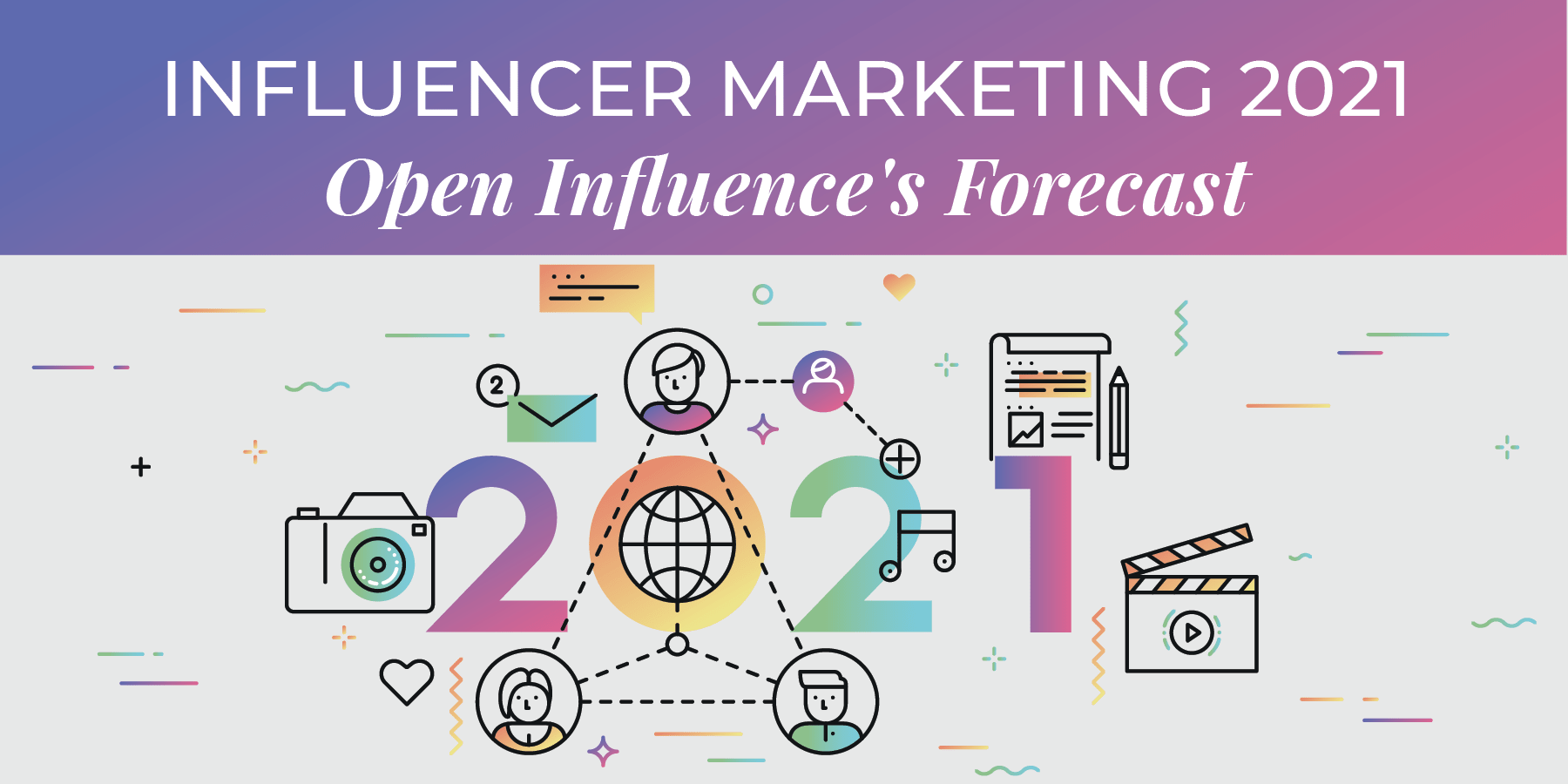We have come to the end of the road of another year.
This past year pushed all our buttons, challenged the whole world (showing us we are all interconnected), and taught us our New Year’s resolutions need to remain flexible (until further notice).
Even though many of us won’t be making set in stone New Year resolutions and we’ll be playing it by ear, it is time for constructive lookback and cautious forecasting as we usher in the most anticipated and unpredictable year in recent history.
Influencer marketing is here to STAY.
Springtime digital corona-hysteria discarded celebrities and influencers as irrelevant. Early on as people were forced to turn online for nearly all their needs, advertisers exercised an overabundance of caution and withheld budgets to see how the people would react to such a serious disruption in consumer patterns.
Shortly, it became clear that the role of influencers has only been made more significant. We need trusted sources of information and shared points of cultural reference to discuss with our friends, family, and colleagues. Social validation is an even stronger currency in December than it was in January.
“The demand is coming back now as advertisers understand influencer impact better,” said Eric Dahan, CEO of Open Influence, a global influencer agency. “Our common desire to discover and rediscover people, things, and experiences will continue to thrive on screen.” The industry is gearing up for a content boom heading into the New Year. The demand for innovation and creativity will be at an all-time high.
Consumers and brands are embracing Paid Social.
Promoters and regulators have long fought a battle for transparency in advertising. Social media has been the next new frontier for a while. As more platforms introduce paid social commerce features, both the influencers and their audiences are beginning to clearly understand both the literal and metaphorical value of such content.
On one hand, it supports influencers in continuing to create their core content. On the other, followers see it as proof of care which translates into trust. As influencers move confidently into direct sales through enhanced social commerce capabilities, investment in paid social is expected to increase this year.
Those marketing budgets are coming back with a vengeance! We encourage everyone to read up on the ins-and-outs and pros-and-cons of this type of content. Check out: “Six Ways to Maximize Influencer Impact with Paid Social”.
(Short) video killed the photo star. Kinda.
In 1980, Video killed the Radio star. Allegedly. Last year, video accounted for almost 40% of targeted influencer marketing content, and that pro ratio is expected to continue to tip in favor of “snackable” videos in the coming year.
Professional video content is becoming a fixture of our daily routines in ways both fun and informative (just look at the booming trend: micro-learning). Many influencers have long relied on videos to tell stories and differentiate among competitors.
Now that increasingly affordable and user-friendly technology is driving unprecedented basic video production values, there are no more amateurs in this.
The Game of Platforms rages on.
While most advertisers opted for “safe bets” like Instagram influencer platforms and Facebook influencer marketing when it came to social media marketing this year, the Great Platform Wars are only starting to heat up.
TikTok social commerce emerged as a winner in the platform adoption category acquiring most new users. Despite runaway popularity and in-app experiments by corporate giants like Walmart and Chipotle, the influencer conversion potential on TikTok remains to be vetted as we head into the New Year.
Another outlier vying for mainstream attention is Twitch. The gamer-centered network hosted a fashion show for Burberry (an industry first) and a townhall with Alexandria Ocasio-Cortez (another political milestone for both). Gaming crossover into influencer marketing could provide the next Big Opportunity for brands. One thing is clear and exciting.
The world will be exploring a much richer influencer ecosystem this year.
Brand activism goes beyond diversity & inclusion.
Certain brands have braved the social and political terrain of activism before. Hello, Nike and Michael Jordan, Colin Kaepernick, or Serena Williams. However, the past year turned brand activism into a mainstream expectation. Where does a brand officially stand on Black Lives Matter, diversity and inclusion in campaigning and corporate practices, environmental sustainability, or other social concerns that are coming to the public and media forefront next.
“Influencers can function as a communications bridge between brands and audiences,” notes Eric Dahan, CEO of Open Influence. “Ability to exercise empathy and create meaningful connections dictates brand longevity now more than success of any single product or service launch.” Consumers care about the Big Picture in our interconnected world!
So next year we are likely to see more influencer engagement on pressing zeitgeist issues. In turn, this will make it easier for brands to partner with those they share values with. A win-win.
Together with Social Media Week we conducted a survey that helped us reflect on the past year and prepare for the new year. You can download the full influencer marketing report here.
We can’t wait to see what the New Year brings for the influencer marketing industry. To stay up to date in all recent trends and developments, check out our blog.






